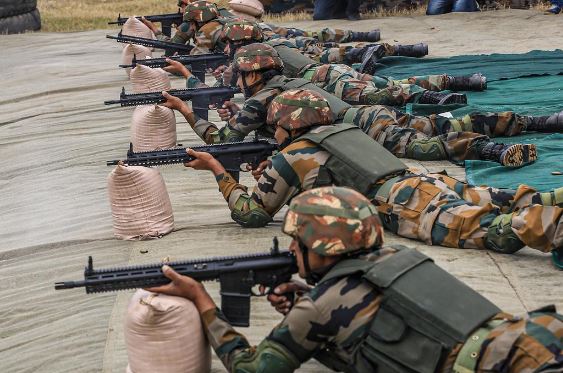The Agnipath scheme for armed forces – Features and the concerns

From Current Affairs Notes for UPSC » Editorials & In-depths » This topic
IAS EXPRESS Vs UPSC Prelims 2024: 85+ questions reflected
Context: In a “transformative” military recruitment reform, the Centre has announced the Agnipath scheme for the recruitment of soldiers in the three branches of the armed forces, on a short-term basis.

The new scheme and Agniveers
- Under the scheme, youth between 17.5 to 21 years of age will be enrolled on an ‘All-India All-Class’ basis as soldiers for four years.
- These recruits, who will be known as ‘Agniveers’, will form a distinct rank bearing a distinct insignia in the respective forces.
- They will not be eligible for any pensionary benefit under the scheme.
- With this, the existing framework of employment for soldiers will cease to exist and those below officer rank — jawans in the Army, sailors in the Navy and airmen in Air Force — will be recruited into the three services through the Agnipath scheme.
- The scheme does not apply to defence officers for whom there is a provision of short-term service called the Short Service Commission or SSC.
What are the features of the new scheme?
- Aimed at reducing salaries and pensions to divert resources for military modernization, the idea of a short-term recruitment model or ‘Tour of Duty’ (ToD) was first mooted around two years back for the selection of officers and jawans, for a limited number of vacancies.
Eligibility and recruitment:
- As part of the Agnipath scheme, selected candidates will be enrolled under the respective Service Acts for four years.
- Those between the ages of 17.5 and 21 years will be eligible to apply.
- Candidates below 18 years of age will have to get their enrolment forms signed by their parents or guardians.
- Medical and physical fitness standards will continue in accordance with existing norms for different categories and trades in the military.
- The required educational qualification will be Class 10-12, depending on the service and assigned role.
Training:
- Agniveers will undergo military training in existing training centres as per the requirements of the service they join and the role they are assigned.
- The training will go on for a maximum of six months, post which an Agniveer will be deployed for the remaining three and a half years.
Selection process:
- An online centralized system will be used for enrolment of Agniveers with specialized rallies, and campus interviews from technical institutes like industrial training institutes (ITIs).
- The selection will be the exclusive jurisdiction of the armed forces.
Permanent enrolment:
- After four years of service are completed, Agniveers will be eligible to apply for permanent enrolment in the armed forces.
- Up to 25% of them will be selected on an objective basis and enrolled as a regular cadre.
Can an Agniveer leave service at any time?
- An Agniveer will not be permitted to leave the service before completing the engagement period except in exceptional cases, with approval of the Competent Authority.
Concerns over Agnipath scheme
Impact on the capabilities of the defence services:
- The reform is primarily being introduced to slash the growing salary and pension bills of the three services.
- Safeguarding national security should be of paramount importance to the Government.
- The armed forces should not be looked at from an economic point of view.
- Military life and career can’t be evaluated from money saved to the exchequer. Looking to be difficult to implement the scheme, with negative connotations in all aspects.
Unemployment:
- Nearly 40,000(75%) youth year on year back rejected & dejected without a job.
Practice Question for Mains
- Critically examine the prospect of the newly introduced military recruitment reform, the ‘Agnipath’ scheme for recruitment of soldiers in the three branches of the armed forces. (15 Marks, 250 Marks).
If you like this post, please share your feedback in the comments section below so that we will upload more posts like this.

